Canned food is so prevalent today that it’s hard to imagine life without it. When you have extra produce that you want to preserve, most people will tell you to can it.
But, what happens when you don’t have the equipment you need for proper canning? What if you run out of flat lids and can’t go to the store for more? Or if you can’t start a fire and keep it going long enough to properly heat and process your jars?
Depending on what happens, canning extra food may not always be possible. You need some alternatives.
Canning was thought to be invented by Nicolas Appert back in 1809, when he was looking for a way to preserve food for the French military. The invention of the mason jar in 1858 helped spread canning’s popularity, as did other inventions throughout history.
But prior to these events, people preserved food without canning. They knew they had to grow or harvest enough food each growing season to last the winter. Their very survival depended on putting up food that they could safely eat months later.
Make YOUR Food Last 2 Years Without Refrigeration
By looking back in history, you can learn alternative methods of food preservation, like the three below.
Fermenting
Perfect for preserving fresh produce, dairy, and more, fermentation is a traditional preservation method used all around the world. Fermentation allows natural microorganisms, like bacteria, to increase the lactic acid in food.
The lactic acid preserves the food. Further details of the fermentation process are detailed in this Survivopedia post.
Sauerkraut, yogurt, sourdough, and kimchi are popular examples of fermented food. In addition to lasting longer, fermented foods give you plenty of probiotics to help you stay healthy.
Basic Process of Fermenting Vegetables
Slice your vegetables finely. Then, use about a tablespoon of salt to draw out some of the moisture from the slices. Squeeze them with your hand until you’ve gotten out as much liquid as possible. Make sure you are catching the liquid in a glass or ceramic container, as this is the start of the brine they’ll ferment in.
Push your vegetable slices into the brine, and make sure they are fully submerged. If they aren’t you can add more brine by mixing a teaspoon of salt with a cup of water. You can also use a plate to help push the vegetables into the brine.
Allow your vegetables to ferment at room temperature. Check it daily, and add additional brine as needed to keep the vegetables covered. Also check for any signs of mold.
Once your vegetables have fermented far enough (taste them to find out), you can slow the process by moving your container to a cool location. The fermentation process will continue at a slower rate, so your food will get tangier as it stores.
Preserving Dairy Through Fermentation
If you have a milk cow on your homestead, you can create a variety of fermented foods to help preserve the milk. Buttermilk is an easy starting point.
You’ll need a cup of raw milk to get started. Put it in a glass container and allow it to stay there until it clabbers. Depending on the temperature of your room, this can take several days.
When your milk is thick, remove all but a quarter cup. To the quarter cup of clabber, add another cup of milk. Leave this out to clabber.
Continue this process of adding a cup of new milk to a quarter cup of clabber. Your goal is to reach a point where the new milk clabbers within 24 hours consistently. Taste it at the point to make sure you have a thick, tart product.
At this point, you can create a quart of buttermilk at a time. Use ¾ cup of the clabber and add fresh milk to make a quart.
Dry Curing
Salt prohibits bacterial growth by removing the water from each cell. Historically, meats were preserved in salt.
When dry cured, meat doesn’t need to be refrigerated. You don’t have to worry about having a working pressure canner, or access to electricity.
All you need is your meat, salt, brown sugar, sodium nitrite, and some wooden shelves or boxes for storing. You’ll also need a way to hang your meat when it’s time.
You can also add additional herbs and spices to give your meat a unique flavor. Feel free to experiment and see what flavor profiles you prefer.
Sodium Nitrite
This ingredient helps keep your meat safer while curing. It helps prevent your meat from harboring botulism.
Many people died from botulism before the practice of adding saltpeter, or sodium nitrite became common. Let their deaths serve as a lesson to you, so you don’t have to learn it the hard way. Add some sodium nitrite powder to your food stores.
But, be careful with it. It can be fatal if eaten alone, in small quantities. You don’t want to leave the container out where your kids or animals can get into it.
Alternatively, you can buy and store premade curing salts. These are mixtures of salt with either sodium nitrite or sodium nitrate. Because of the dilution, you’d have to consume a lot more to reach a fatal dose.
When to Cure Meat for Best Results
Whatever kind of meat you have, you can use salt to preserve it. But without refrigeration, it’s important to start the preservation process at the right time of year.
You need a cool spot, ideally 36 degrees Fahrenheit for the first part of the process. The second part requires a slightly warmer location.
The temperature is essential. Too cold and the preservation process will take longer. Too hot and you risk spoilage.
If the evenings are cool in the fall where you live, do your preserving then. That way your food is ready to go before the freezing temperatures of winter arrive.
The Curing Process
Rinse your meat and pat it dry. Then, cut off any chunks of visible fat. You need lean meat because the salt won’t penetrate the fat well.
Mix your salt, nitrite, and sugar. For 100 pounds of meat you’ll need:
- 8 pounds salt
- 2 pounds sugar
- 2 ounces sodium nitrite
Once you’ve mixed your cure, divide it into half. You’ll need the first half on day one of your curing, and the second on day seven.
Rub the mixture thoroughly on each chunk of meat you’ll be drying. Pay careful attention to the area by bones, to ensure you cover it well. You need to cover the entire surface of your meat.
When it’s ready, place your meat in a cool environment in wooden boxes or shelves. After seven days, take it out and check it carefully. Apply the remaining cure mix, then return the meat to it’s resting place.
Leave it here for a month. If the temperature drops below freezing, you’ll need to extend the resting period.
Once it’s time, move your meat to a warmer environment to hang. You want the temperature to be around 50 degrees Fahrenheit. Hang the meat carefully, where pests and pets can’t get to it.
Then leave your meat to complete the curing process. It’ll shrink as it continues to dehydrate.
When you’re ready to eat, rinse the meat carefully to remove excess salt. Then check for any signs of mold or funny smells and cook as normal.
Dehydrating
By taking the moisture out of food, you greatly increase it’s storability. While modern food dehydrators are quickest, you may not always have the luxury of electricity when you need to preserve food. When necessary, the sun makes a powerful dehydrator.
You can find directions to make two different types of solar dehydrators here. While you can just set food in the sun to dry on blankets, you risk pests or dust getting into your food. A dehydrator set-up will help keep your food clean and safe.
Once you have your dehydrator ready, slice your food into thin slices. You don’t want any of them more than ½ an inch thick. This will help ensure even dehydration.
Many people recommend blanching your food at this point, to help minimize potential pathogens. A short amount of time in hot steam will help keep your food safe. Just remember to drop them in cold water when they’re ready to stop the cooking process.
Then, add the slices to the tray of your solar dehydrator. Leave a little space between each slice to help encourage airflow. Rotate your trays every day until they are dry.
What’s your favorite way to preserve food without canning?
I only focused on three alternatives to canning in this article. There are others that can safely be used, and it’s important to have some in your knowledge.
That way if you are ever unable to can, you can pull out this forgotten wisdom and continue to feed your family, even during the winter. Please share your favorite canning alternatives in the comments below.


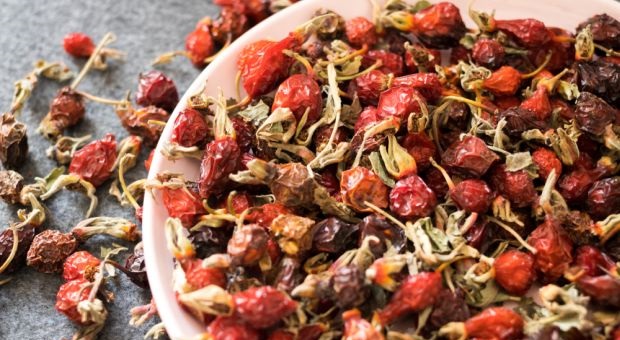
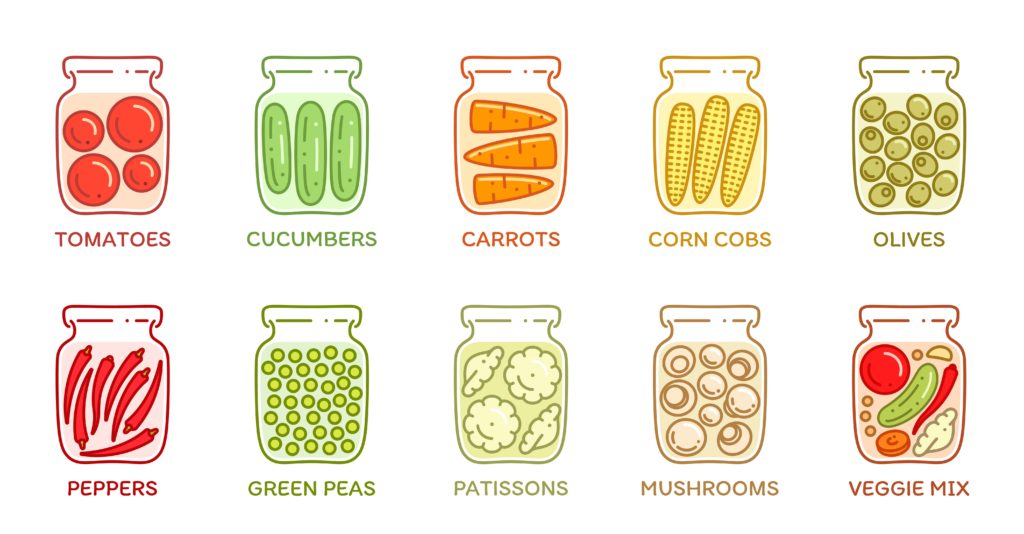

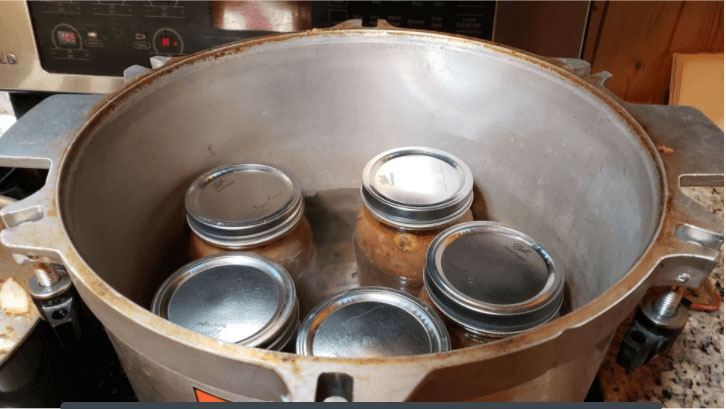
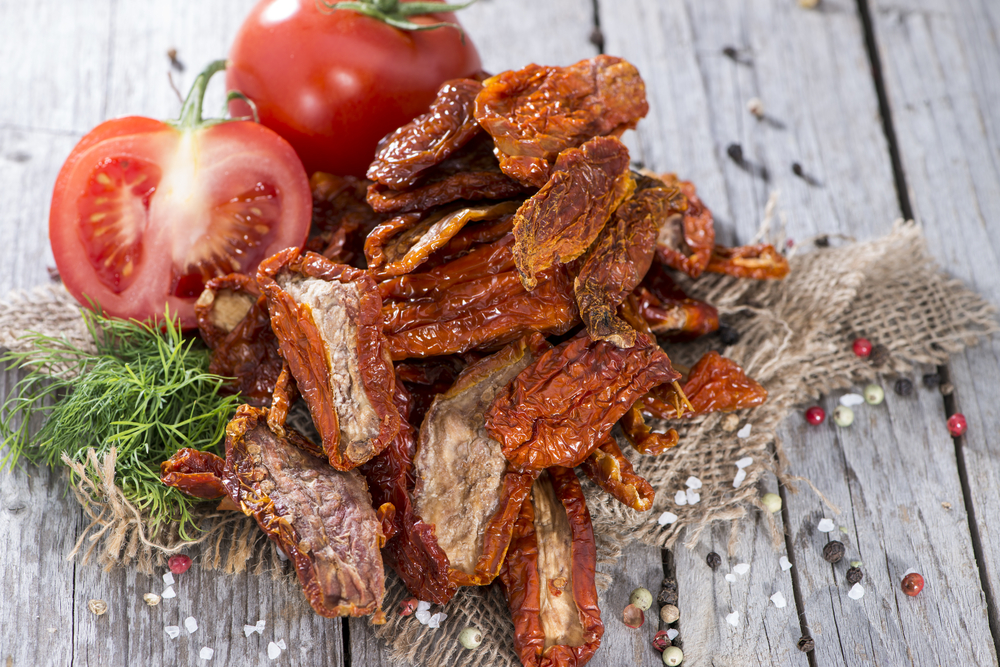
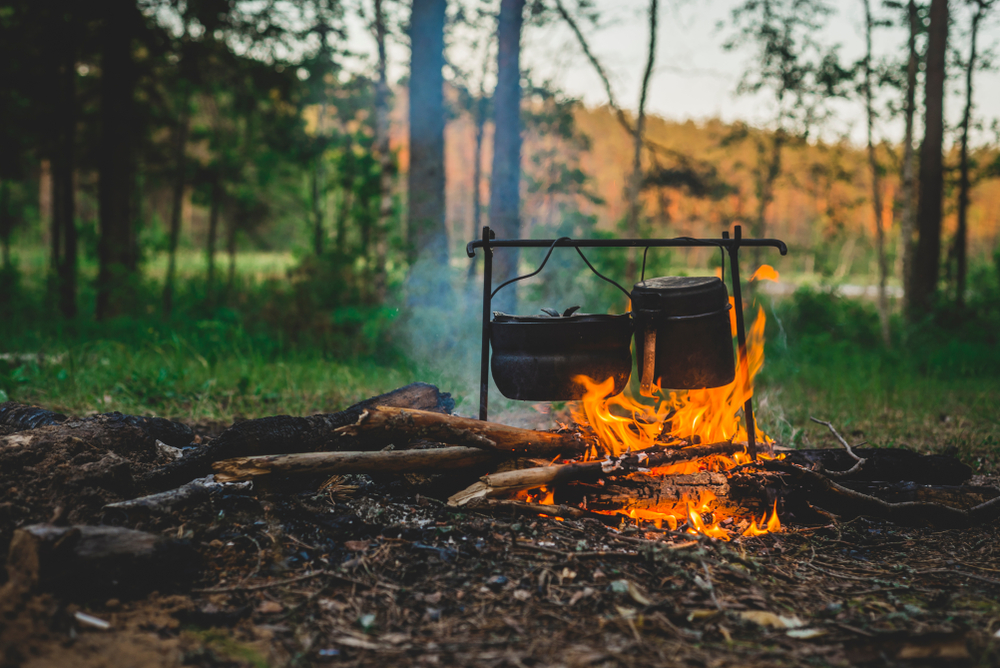
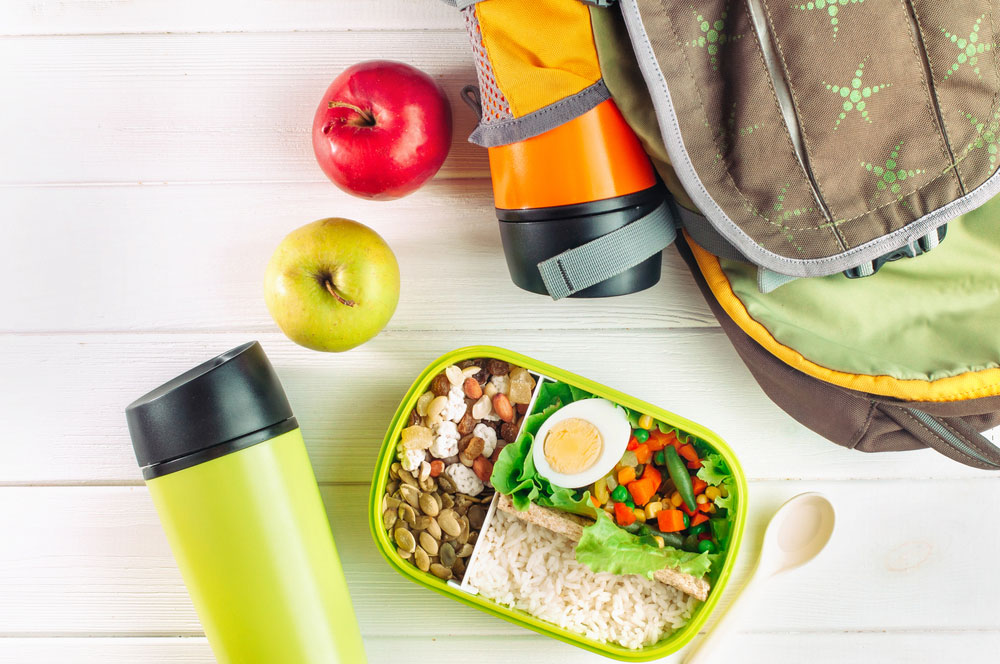

Bill in Idaho | June 22, 2018
|
Hello, Lisa. I was Very Happy to Read your Excellent Comments on Fermentation !
I would Like to Add just a bit about preserving meats. . . . For the Sole Purpose of Accuracy . . .
Sodium nitrite is the inorganic compound with the chemical formula NaNO2.
It is a white to slightly yellowish crystalline powder that is very soluble in water
and it is hygroscopic.
The main use of Sodium Nitrite is for the production of organo-nitrogen compounds.
A principal Concern about the use of Sodium Nitrite is the formation of carcinogenic
nitrosamines in meats containing sodium nitrite when that meat is charred or overcooked.
Sodium Nitrate is a polyatomic ion with the molecular formula NaNO3.
This anion is the conjugate base of nitric acid.
Inorganic nitrate salts are soluble in water at standard temperature and pressure.
Nitrates are found in mineral deposits, sp. nitratine, a major source of sodium nitrate.
>> Please NOTE: Saltpeter is another example of an inorganic nitrate salt. This compound
is Potassium Nitrate (aka K2SO4).
A rich source of Inorganic Nitrates in the human body comes from diets rich in
leafy green foods, such as spinach and arugula.
Michael | June 23, 2018
|
Bill, I think you meant to write that saltpeter is KNO3 rather than K2SO4 which is potassium sulfate.
Scott Todd | June 27, 2018
|
OK, so once you can’t get canning lids anymore, are we going to have an easier time getting a hold of salt and sugar for this sort of processing?
tutorial | June 23, 2019
|
It’s amazing for me to have a site, which is good in support of my experience.
thanks admin
Alex | June 24, 2019
|
We are happy to help you!
Alex, from Survivopedia.
Shay Hamilton | November 10, 2021
|
My Mom told me how they canned on the farm by boiling the product- let’s say carrots- then sterilizing glass or mason jars- fill the jars and seal with about 1/4” hot wax. You have to make sure all the air bubbles are freed from under the liquid wax before it sets. I use a toothpick to poke the bubbles and free them. I use this method every summer to put up jams, jelly and applesauce. I have had jelly last 3 years with this method. The key is to get rid of the air pockets under the wax, as noted above., so that there is no air for bacteria to grow in.